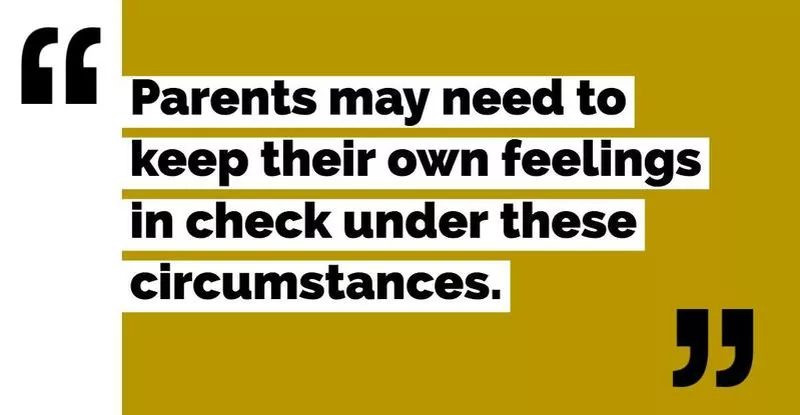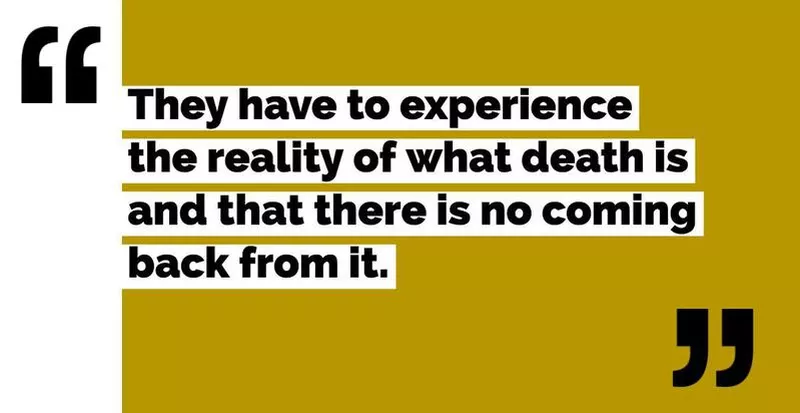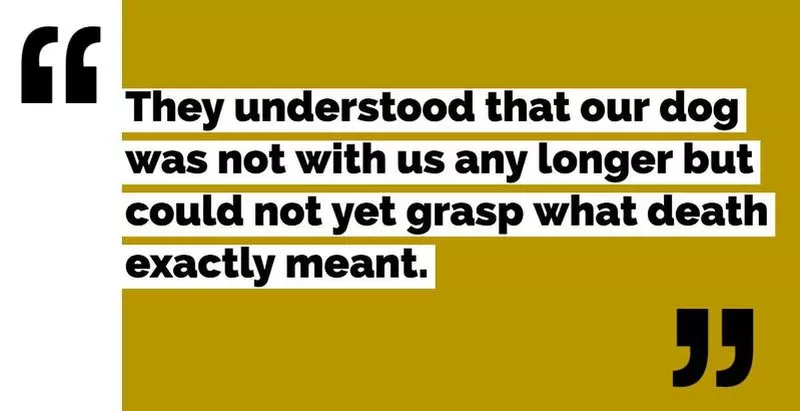Helping a child grieve for the death of a beloved pet can be one of a parent’s biggest challenges.
Parents are often grieving themselves, and they also have to comfort their children without scaring them.
Family Minded reached out to child development experts and parents for their best advice on how to talk to a child after a family pet dies. Here’s what they had to tell us.
Be Direct

The death of a pet is the first encounter many kids have with death. The most important thing for parents to do is to be direct when choosing their words to explain the pet’s death to kids, said Lauren Ross, a clinical social worker and parent coach in Denver, Colo.
“It is essential that parents use straight-forward language with children of all ages,” she said. “Terms such as ‘He went to sleep’ or ‘He passed away’ may be vague and confusing for children, leading to questions such as ‘When will we wake up?’ or ‘Where did he go?'”
Children are going to struggle to understand that death is permanent, so word choice is important.
“Parents should use compassionate and honest language to help a child understand what it means to die,” said said, “such as ‘His body stopped working and he died.'”
Handling Big Feelings

Ross said her heart broke when her 7- and 12-year-olds lost their beloved pet hamster last May. How you handle your own feelings may be dependent on family dynamics.
“We sat on the couch and cried together — all I could do was reassure them that their sadness and anger was normal and OK, though very hard and painful to experience,” Ross said.
“Parents may need to keep their own feelings in check under these circumstances,” she said. “In my own family, my husband had to be reminded that the kids needed this time to feel their sadness, even though he felt it was time for them to get over it.”
The Conversation Doesn’t End When You Stop Talking

Heidi McBain, a licensed professional counselor in Texas, said kids will keep coming back to parents with questions long after the initial discussion about the pet’s death.
She said its crucial for parents to monitor behavior changes: Are they having trouble sleeping? Do they seem fixated on the death of their beloved pet? Are they crying a lot? Are they really clingy?
“With kids, they will still be thinking about your conversation and processing what happened long after this conversation is over. So, they may have lots of questions in the days to come,” she said. “You may need to involve the help of a therapist, as they can help your children with this loss at a deeper level, through play therapy or activity therapy, depending on the age of your child.”
Listen

After the initial shock of losing a pet, kids will move into a grief stage. That’s the parent’s queue to listen, Ross said.
“Let kids talk and just listen. Acknowledge feelings and give children permission to feel them,” she said. “Many times a grief reaction becomes more complicated when children are not given this essential acknowledgment and permission to feel their grief.”
Show Children That Death Is a Part of Life

At the farm-based preschool where Whittier worked, the emphasis when helping kids grieve an animal that had died was on the lifecycle of the animal. They would note the birth of new chick or rabbits, and they’d remember when the pet was young by using pictures.
“For the preschool kids — as for any young child — we would highlight the whole life cycle,” Whittier said. “We were always emphasizing the natural, normal way it is for animals to be born, grow and live for many years, and then get older and die.”
Never Minimize a Child’s Grief

Carole Lieberman, a psychiatrist and an author of books for children and families, says parents often make the mistake of trying to stop a child from crying by minimizing their grief.
“Don’t stop your child from crying or grieving with words such as, ‘There, there, we’ll get you a new kitty,’ or ‘Stop crying already, it was only a pet. You’d think it was your grandma, the way you’re carrying on’,” she said.
“Kids need to be able to express all their sadness about the loss of a pet,” Lieberman said. “If they are stopped prematurely — and, even worse, shamed for being sad — this will squelch their emotions for years to come.”
Books Can Help

Ross suggested parents read books about grief with their children. Her favorites include “Badger’s Parting Gifts,” “Lifetimes,” “Sad Isn’t Bad,” and “When Dinosaurs Die.”
“Make a memory book of your pet together,” she added. “Your family could print out pictures and create a story together of your pet’s life and how important he or she was in your family.”
Commemorate the Pet

Along the lines of making a memory book — which several experts recommended — Lieberman said families should find ways to commemorate the pet. That helps children to learn how to celebrate the pet’s life rather than dwelling on their death.
“Hold a ‘memorial’ ceremony, similar to what we do for people,” she said. “You can light candles, make a photo album of your pet, tell stories of cute experiences with the pet, and so on. Decide how you want to respect your pet’s body: cremation or burial, in the backyard or in a pet cemetery.”
Lieberman said, “Showing respect and appreciation for how the pet enriched your life is very important.”
Don’t Rush to Replace the Pet

As the parent of a 4-year-old boy, Jennifer Hancock knows a parent’s natural instinct is to take away a child’s pain as soon as possible. And that instinct was tested when their family lost their cat. But rushing out to replace the cat with a new kitten would have been worse for her son in the long run, she said.
“If you do it too soon, this will interrupt the grief process for your child. Don’t do that to them,” Hancock said. “Your child may beg for a replacement pet. What they are trying to do is bargain their way out of death and the emotions they are experiencing. This isn’t really possible — so don’t pretend it is.”
“Your child needs to learn to cope with death — as we all do,” she said. “And for them to learn, they have to experience the reality of what death is and that there is no coming back from it and that you can’t replace your lost loved one, you just have to learn how to live without them. This may seem cruel, but it is actually quite compassionate.”
Use Different Strategies With Different Ages

Laura Cozza is a parenting coach and had to explain the unexpected death of her family’s 10-year-old dog to a 15-year-old son who had grown up with the dog, as well as a 7- and a 3-year-old.
“Our 15-year-old took it the hardest because he grew up with him and was with him the longest of the kids,” she said. “He, of course, understood death so the way we talked to him about what happened was different than the younger kids. We explained to him what was wrong with our dog and provided comfort for him by reminiscing and sharing old pictures.”
“As far as the 7-year-old and 3 year-old were concerned, they understood that our dog was not with us any longer but could not yet grasp the idea of what death exactly meant,” Cozza said. “We explained to them that our dog was sick and didn’t feel good but now he feels better and is happy and having fun in Heaven with God.”
The key with all three children was to be upfront and honest. “Being open with the kids about it,” she said, “letting them see us sad and that it was okay to feel that way helped them to grieve and feel comfortable talking to us about their feeling.”
The Death of a Pet Is a Learning Experience

Pets teach kids a lot about life and responsibility, and death is part of that learning experience. When it came time to put her family dog to sleep, Lucy Holmes allowed her 4-year-old to sit in on the procedure.
“I think it’s really important we remove the taboo of death and talk about it with our kids as young as possible. My 40-year-old brother had never witnessed an animal euthanasia before and was devastated, my daughter now has a greater understanding of death,” she said. “I feel the experience was extremely important for her, and all kids.”
Parents need to make their own decision about their own kids on whether or not to let them sit in on a euthanasia procedure. But as for adults, vets and other experts generally recommend they be present, as people who opt to not be present for the procedure often regret it later and have a harder time finding closure.
The same rationale can be applied to children, if the parent feels they are mature enough to handle the procedure.